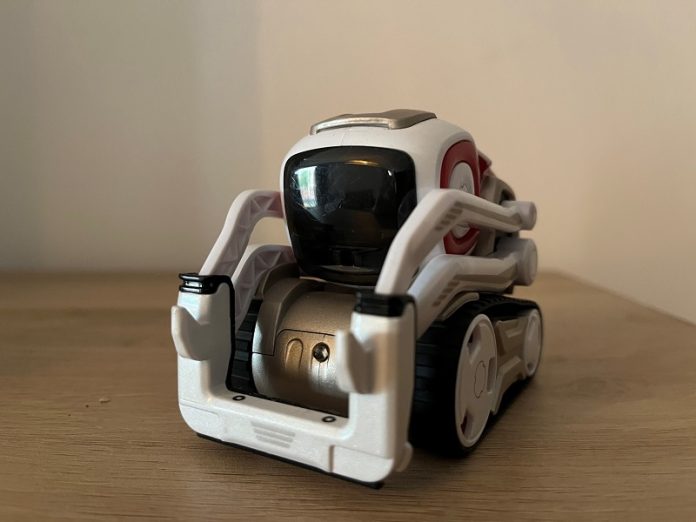
Spending time playing games with a robot can actually make us see it as more human, according to new research from the University of East Anglia.
The study, published in the Journal of Experimental Psychology: Human Perception and Performance, reveals how simple social interactions can shift our perception of robots from mechanical machines to something more humanlike.
As robots become more common in homes, hospitals, and workplaces, scientists are exploring how to make our interactions with them feel more natural.
This new research offers one possible answer: play.
Psychologists at UEA ran a series of experiments using a small robot called Cozmo. Cozmo is a boxy, toy-like robot that moves on treads and has a small lift arm.
It can express emotions such as happiness, sadness, curiosity, and frustration, using lights, sounds, and movement.
More than 100 participants took part in the study. Half of them were asked to play a simple game with Cozmo before starting the experiment. The other half interacted with Cozmo only in a mechanical, task-based way.
The difference was striking. Those who had played a game with Cozmo were more likely to see the robot as behaving like a human.
They even began to make the same kinds of timing errors they would make when judging a human’s actions—something that doesn’t typically happen with machines. This suggests they began to view Cozmo as a thinking, independent being.
Lead researcher Dr. Natalie Wyer explained that the way people interact with robots affects how they perceive them. “We found that people are more likely to see robots as humanlike when they have a chance to engage with them socially first,” she said.
“Even a simple game can shift our perception from seeing a robot as a tool to seeing it as a social partner.”
Interestingly, Cozmo doesn’t look anything like a human. It’s small, box-shaped, and lacks facial features. Yet, that didn’t stop people from forming a more personal connection with it after just a short play session.
The findings have big implications for the future of robotics, especially in areas like caregiving and customer service. If robots are going to become part of our daily lives, helping us with emotional or social tasks, we may need to bond with them first.
As Dr. Wyer put it, “If we want to work side by side with robots, it might help to play with them first.”



